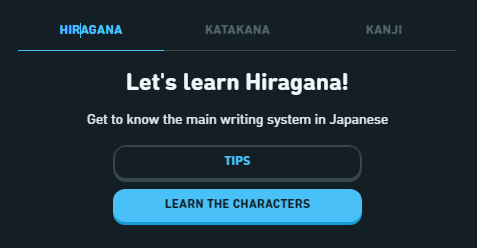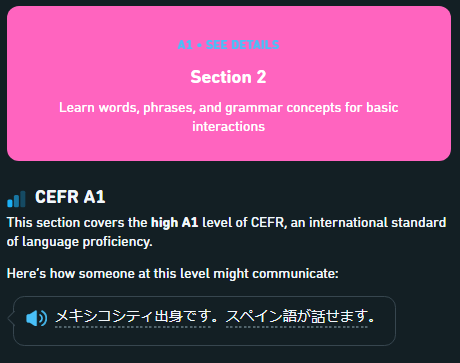
image from duolingo blog
Duolingo is a popular free language app. This is available in android, ios and pc. It's a fun way to learn a language since the learning experience is gamified. Learners can also choose how much time they can spend to learn each day. I used Duolingo to learn Nihongo and I can say that it's fun to use and engaging. It also kept me motivated as I try to compete in the leaderboards and keep my streak going.
What you can Learn
I learned the basics from Duolingo. The characters Hiragana, Katakana and some Kanji. I also learned a lot of vocabulary and grammar. In my opinion, this makes the time I spent on Duolingo worth every minute.


At this point, I can already read Hiragana, Kataka and some Kanji. I'm pretty satisfied since I feel that I'm progressing in my learning. I used Duolingo until I finished A1 - Section 2.

A1-Section 2 of Duolingo is supposed to be equivalent to CEFR A1 language proficiency. I was able to apply what I learned in my recent trip to Japan. For example in the restaurant where they usually have chopsticks: "Do you have a spoon? Two spoons please" [spoon wa arimasuka? spoon o futatsu kudasai]. However I still find it difficult to understand Nihongo in daily conversations. I can understand some [tsugi no eki wa...] "Next station is..." but in the supermarket or convenience stores I have to sheepishly use google translator to communicate with the cashier 😅

Why I Stopped Using Duolingo
After learning from Duolingo in several months, I felt that my progress was slowing down even as I increased the time I spent on the app. I'm a bit frustrated that I still can't understand Nihongo when watching anime or Japanese shows on Netflix though I can catch some words. This is because after reaching A1-Section 2, I'm still in stuck the "masu" form of verbs! There are a lot of conjugations in Japanese verbs and learning only one form severely limits a language learner. It's like learning how to say in English "I eat bread" [watashi wa pan o tabemasu] while not "I'm eating bread" [watashi wa pan o tabete imasu] or "I like to eat bread" [watashi wa pan o tabetai desu]. When I started Section 3, other verb forms are still nowhere in sight so I decided to look for other learning materials.
Conclusion
If you are starting your language learning journey then Duolingo maybe good for you. Indeed, I would not say that Duolingo is useless. I learned the basics (Hiragana and Katakana) from it including a lot of vocabulary and grammar while having fun. My start in Duolingo prepared me to handle more difficult learning materials.